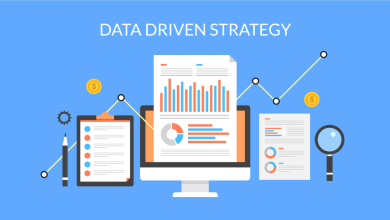
In a digital age dominated by emails, social media, and online advertisements, one might assume that direct mail marketing has lost its charm. However, the data tells a different story. Direct mail remains an effective, trusted, and increasingly popular marketing channel. Businesses across industries are rediscovering its potential to reach audiences in a tangible, personalized, and impactful way. Let’s dive into the data to understand why direct mail marketing continues to thrive and how it adapts in the modern marketing landscape.
A Resurgence in Popularity
Contrary to popular belief, direct mail has not been replaced by digital marketing—it has evolved alongside it. In recent years, businesses have witnessed a resurgence in direct mail’s popularity due to its ability to cut through the noise of digital clutter. With the average person receiving hundreds of emails and online ads daily, direct mail offers a refreshing, physical alternative.
According to a study by the Data & Marketing Association (DMA), direct mail boasts a response rate of 4.9% for prospect lists and 9% for house lists. Compare this to the mere 0.6% response rate of email marketing, and the value of direct mail becomes apparent. Furthermore, 73% of American consumers say they prefer being contacted by brands via mail because they can read it at their convenience.
The Psychological Impact of Direct Mail
Direct mail’s appeal lies in its tangible nature. Studies show that physical mail creates a stronger emotional connection than digital ads. According to research conducted by Canada Post, direct mail requires 21% less cognitive effort to process than digital media, making it easier to understand and more memorable. Moreover, the physical aspect of direct mail engages multiple senses, enhancing brand recall.
Consumers also perceive direct mail as more trustworthy. Unlike digital ads, which are often associated with spam or fraud, direct mail feels more personal and genuine. This trust factor plays a significant role in its effectiveness as a marketing tool.
Integration with Technology
One of the primary reasons for the continued success of direct mail marketing is its seamless integration with modern technology. Today, businesses can automate their direct mail campaigns through a direct mail API, making the process faster, more efficient, and data-driven.
A direct mail API allows companies to send personalized mail pieces to their customers without manual intervention. By integrating a direct mail API into their CRM or marketing software, businesses can trigger mail sends based on specific customer actions, such as abandoned carts or new subscriptions. This automation not only saves time but also ensures timely and relevant communication, increasing the likelihood of a positive response.
The Role of Personalization
In an era where personalization is key to customer engagement, direct mail marketing excels. Unlike generic emails or banner ads, direct mail pieces can be highly customized based on customer data. Marketers can tailor the design, messaging, and offers to align with individual preferences, purchasing behaviors, and demographics.
For instance, a local coffee shop might send a “welcome” postcard with a discount code to new residents in the area. Similarly, an e-commerce business could use direct mail to send personalized product recommendations based on browsing history. The ability to deliver such targeted messages makes direct mail a powerful tool for nurturing customer relationships.
Combining Direct Mail with Digital Campaigns
Direct mail is no longer a standalone strategy; it’s a critical component of omnichannel marketing. When combined with digital campaigns, direct mail amplifies overall performance. For example, a study by USPS found that adding direct mail to a digital campaign boosts conversion rates by 10% to 15%.
QR codes, personalized URLs (PURLs), and augmented reality (AR) are some of the technologies used to bridge the gap between physical and digital channels. A direct mail piece might include a QR code that directs recipients to a landing page or an AR feature that brings the mailer to life. These integrations not only enhance customer engagement but also provide valuable tracking data to measure campaign effectiveness.
Sustainability and Eco-Friendly Practices
While environmental concerns have often been a criticism of direct mail marketing, the industry has made significant strides in adopting sustainable practices. Many businesses now use recycled materials, soy-based inks, and carbon-neutral delivery options to minimize their ecological footprint. This commitment to sustainability resonates with eco-conscious consumers, further enhancing the appeal of direct mail.
Industries Leveraging Direct Mail
Direct mail marketing is versatile and effective across various industries. Here are some examples of how different sectors use it:
- Retail and E-commerce: Personalized discount coupons, product catalogs, and holiday promotions.
- Real Estate: Just-listed postcards, open house invitations, and neighborhood market reports.
- Nonprofits: Donation appeals, event invitations, and annual reports.
- Healthcare: Appointment reminders, wellness tips, and new service announcements.
Each industry tailors its approach to align with customer needs and preferences, leveraging the unique advantages of direct mail to drive results.
Data-Driven Insights
The effectiveness of direct mail marketing is further enhanced by data analytics. By analyzing customer data, businesses can segment their audience, identify trends, and refine their messaging. Tools like predictive analytics help marketers anticipate customer needs and design campaigns that resonate with their target audience.
For example, a business can analyze past campaign performance to determine which mailer designs and offers yield the highest response rates. This data-driven approach ensures continuous improvement and maximizes ROI.
Challenges and Solutions
Despite its many benefits, direct mail marketing does come with challenges, such as higher costs compared to digital campaigns and the risk of being overlooked as “junk mail.” However, these obstacles can be mitigated through smart strategies:
- Targeted Mailing: Focus on high-value prospects rather than mass mailings to reduce costs and improve relevance.
- Creative Design: Use eye-catching designs and compelling copy to grab attention and stand out.
- Personalization: Tailor messages to individual recipients to enhance engagement and response rates.
- Technology Integration: Leverage a direct mail API for automation and efficiency.
The Future of Direct Mail Marketing
As businesses continue to seek innovative ways to connect with their audiences, direct mail marketing is poised for sustained growth. Advances in technology, data analytics, and sustainable practices will further enhance its effectiveness and appeal.
In conclusion, the data speaks for itself: direct mail marketing is far from obsolete. Its tangible nature, high response rates, and ability to integrate seamlessly with digital strategies make it a valuable asset in the modern marketer’s toolkit. By embracing automation through tools like a direct mail API and focusing on personalization, businesses can unlock the full potential of this timeless marketing channel.
Explore how you can elevate your campaigns with direct mail marketing and stay ahead in today’s competitive landscape.





